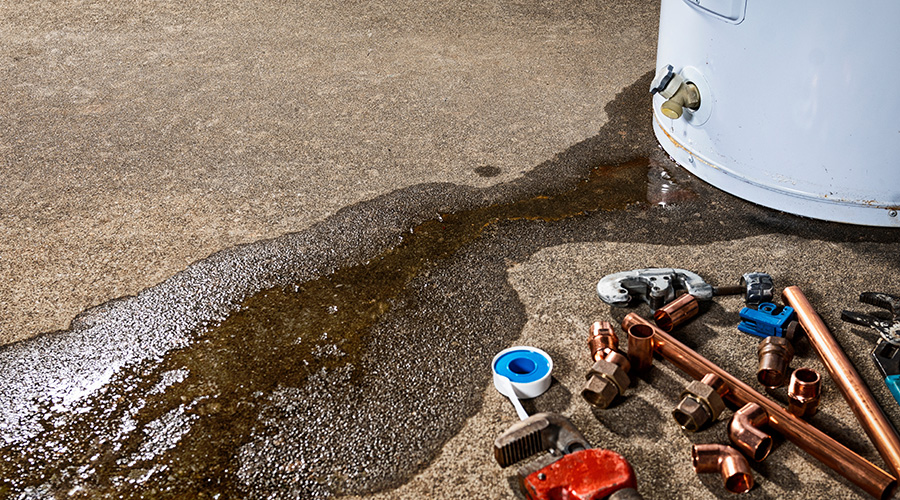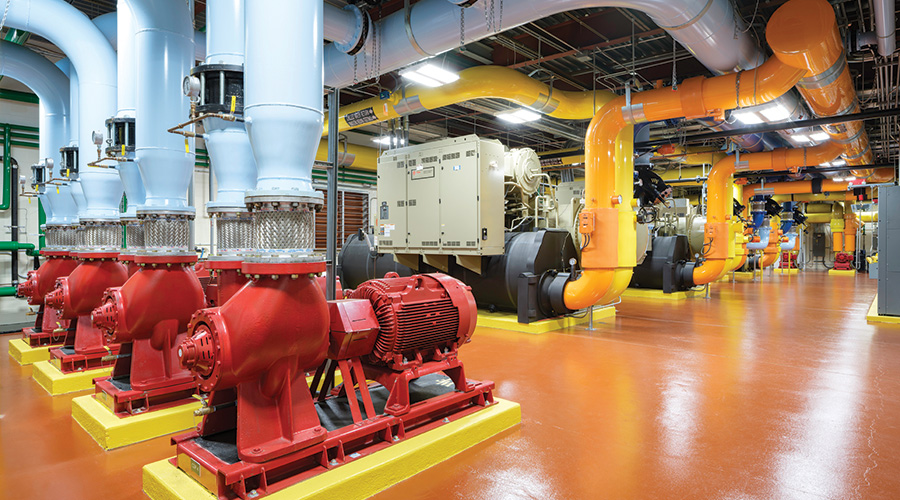Next Generation of HFC Alternative Refrigerants Are More Environmentally Responsible
HFOs and natural refrigerants are replacing HFCs, and may lead to greater energy efficiency. But there are a few caveats.
The next-generation refrigerants basically fall into two categories. The first are chemically produced and are mainly hydrofluoroolefins (HFOs) or blends of HFCs and HFOs.
“New refrigerant technology is developing rapidly,” says Deshmukh. Among HFOs are R-1233zd(E), R-1234yf, R-1234ze, R-1336 mzz(Z), R-513A, R-514A, R-452B and R-454B.
Several HFOs already available in new chillers have many of the attributes of R-134a and R-410A. They have low toxicity and low flammability, and are classified by ASHRAE as A1 refrigerants. The A1 classification means they do not need to wait for new model codes and standards revisions for installation and operation, explains Dietrich.
R-513A is a blend of HFC-134a and HFO-1234yf. “R-513A is a non-flammable refrigerant that has a lower GWP than R-134a, but similar performance,” says Kohler. The blend has low toxicity and flammability, along with a 56 percent reduction in GWP, according to Deshmukh.
R-1233zd(E) is a single component refrigerant that has low toxicity, is nonflammable, and also has a low GWP. While R-1223zd(E) is an alternative for new chillers, it is not a retrofit alternative for existing R-123 chillers.
One retrofit alternative for R-123 is R-514A, although the chiller will have to undergo some modifications to use it. Like R-123, R-514A has an ASHRAE B designation because of its higher toxicity and currently it may reduce the capacity of an R-123 machine. R-514A also is being offered as an option in some new water-cooled centrifugal chillers.Natural refrigerants
In addition to the chemically produced HFOs, chiller manufacturers also are using natural refrigerants, which are substances “that exist naturally in the environment and can be used as cooling mediums in refrigeration systems,” according to Michel Moreira, commercial refrigeration sales senior manager with Embraco, North America region.
Commonly used natural refrigerants include hydrocarbons such as butane and propane, carbon dioxide, and ammonia. “The use of natural refrigerants has been successful in many developed countries and it is on the agenda worldwide,” says Moreira.
The reason for the growing popularity of natural refrigerants is that they have very low GWP compared to most HFCs. “For example, R-290 (propane) and R-600a (isobutene) have a GWP of 3.” This is significantly lower than R-134a (1,430) and R-404A (3,922). Carbon dioxide has a GWP of 1.
One potential drawback of natural refrigerants is that, with the exception of carbon dioxide, they are more flammable and can be more toxic than refrigerants currently being used.
The HVAC industry, ASHRAE, and life safety and building codes groups are investigating the safety of flammable refrigerants and determining the risks, probabilities of occurrence, and potential severity for various next-gen refrigerant applications. Several safety codes, including the National Fire Protection Association (NFPA) and ASHRAE 15, govern commercial and institutional HVAC systems.
The industry is currently working on a new 2L sub-classification for refrigerant flammability to cover “mildly flammable” refrigerants.
“ASHRAE 15 does not really address the new category of mildly flammable refrigerants,” says Amrane. “So ASHRAE is revising the standard and proposals are being debated.” According to Amrane, the revised ASHRAE 15 standard may be completed by early 2018. When that is accomplished, the revised safety standard will be incorporated into the International Fire Code and mechanical codes, he says.
Once the codes and standards are in place, they still require adoption by states and local building and fire codes.
“In cases where the new refrigerant falls under the ASHRAE 2L flammability safety group, the product safety codes and building codes in the United States are not yet in place to allow use of these refrigerants at all,” notes Kohler.
Like their chemical counterparts, natural refrigerants are now being used by chiller manufacturers. To ensure the installed chillers meet evolving rules and regulations, Moreira emphasizes the importance of training both manufacturers and service technicians so that natural refrigerants are properly handled.
Managing leaks
The Environmental Protection Agency has taken steps to reduce leaks of refrigerants. Now, all refrigerant replacement substances, including HFCs and HFO options, are covered by containment requirements, not just CFCs and HCFCs as was previously the case. “Hydrocarbons in small, self-contained systems are given an exception for venting,” says Vijay Deshmukh, centrifugal chiller portfolio leader at Trane.
Annual trigger leak rates, which require facility managers to take corrective action, have been reduced as well. For example, the new trigger leak rate for comfort cooling has been reduced from 15 percent to 10 percent. Deshmukh believes this may push or encourage the HVAC industry to move toward technologies that are more hermetic with fewer joints and seals, “for better long-term refrigerant containment.”
The new rule also has mandatory leak inspections requirements and increased recordkeeping requirements.
The changes to refrigerant management requirements under Section 608 of the Clean Air Act were effective Jan. 1, 2017 and will be fully implemented by Jan. 1, 2019, according to Deshmukh.
Balancing act
Because many refrigerant changes are still a few years away, experts are not anticipating any major disruptions in terms of supply of the next or the last generation of refrigerants for the near future.
Meanwhile, facility managers are faced with a delicate balancing act when it comes to deciding on new chiller purchases and future refrigerant needs. Refrigerant selection still must weigh building occupant safety, energy efficiency, initial costs, lifecycle maintenance and operations costs, and refrigerant and chiller sustainability.
Despite some questions, the transition to new alternative refrigerants could yield a bonus: Next-generation refrigerants may improve energy efficiency substantially.
“R-410A replacements are currently being developed which could see significant efficiency improvements,” observes Deshmukh. “For large tonnage centrifugal chillers, we are seeing the industry looking toward more efficient low pressure solutions that are better in efficiency than medium pressure R-134a.”
Rita Tatum, a contributing editor for Building Operating Management, has more than 25 years of experience covering facility design and technology.
Email comments and questions to edward.sullivan@tradepress.com.
Related Topics:













